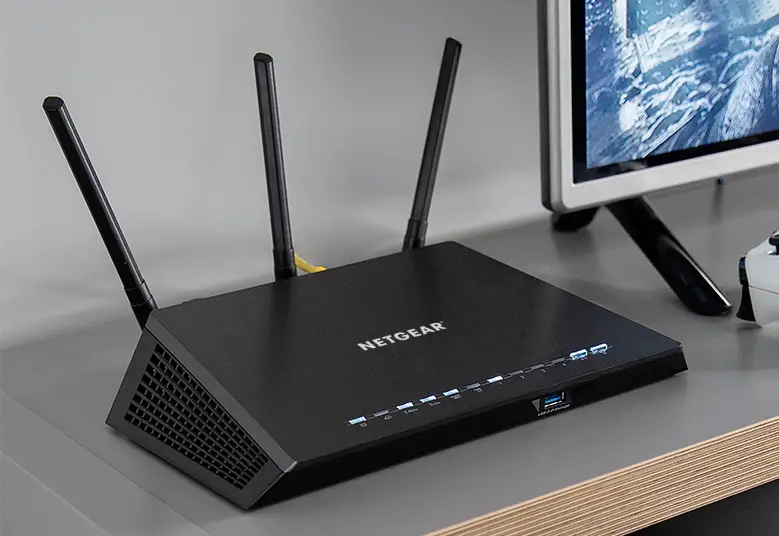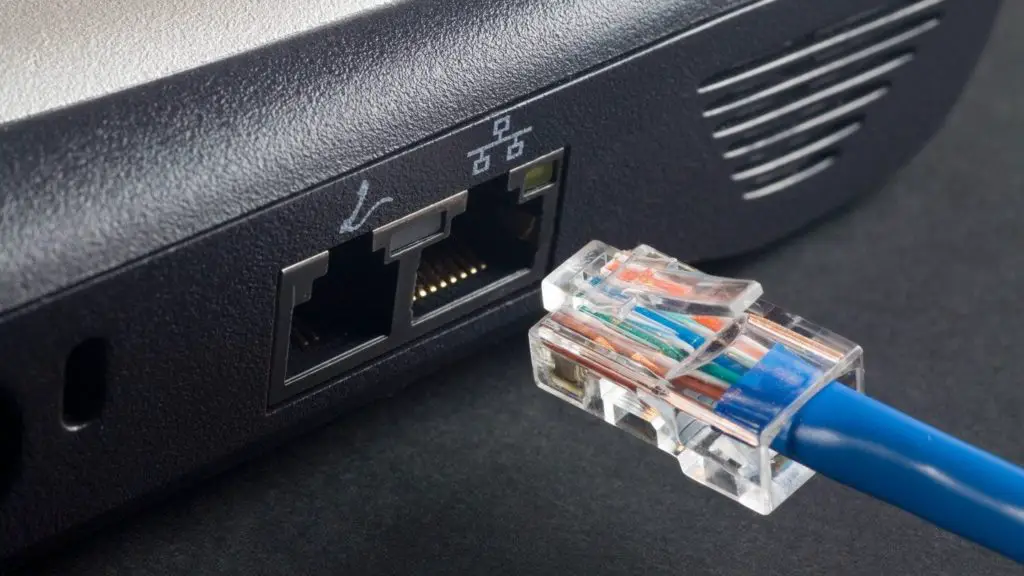You are most likely to experience this problem after sudden power outages, home renovations or after changing one or more of your home network components.
Before you start exploring where is the problem within your home network, make sure that your internet service provider is still sending you an internet signal and that you have a connection to the modem. Once you’re positive that the internet signal is reaching your home and modem, you can start figuring out what went wrong and how to fix the problem.
Stick around end let us help you with the process of finding the cause for your Netgear router not recognizing the ethernet cable and possible solutions.

CONTENTS
Why Did Netgear Router Stop Recognizing Ethernet Cable?
This is usually a hardware issue. Once your internet signal gets to the modem or the router, it needs to pass through the ethernet cable and reach the PC. Therefore, you have three major components in this chain, and failure of any of them can result in displaying the message “Netgear router not recognizing ethernet cable.” This usually happens when connectors on the cable aren’t seated all the way in, or when the cable breaks. However, it can be caused by the slots on both ends or when either ethernet card or router fails.

How to Fix the Problem of the Netgear Router Not Recognizing Ethernet Cable?
Since there are only three elements to inspect, the best course of action is to inspect them one at a time to see when the problem disappears. Doing things this way will reduce the chance of error or reaching a wrong conclusion. So, let’s start from the top.
Try Rebooting Modem and Netgear Router
We mentioned earlier that the problem is usually caused by the hardware. However, there could be a bug in the router or network card that can cause this. Rebooting all the devices in the chain would eliminate this as a possible cause of the problem. Start with the modem, then the router, and disable/enable the network adapter in the end.
Rebooting devices is easy. Just power them off either by pressing the power button or unplugging the power cord for at least 15 seconds, then power them back on in the same order.
Recommended reading:
- How to Fix Netgear Router Internet Light Blinking White?
- How to Fix the “Netgear Router Red Light, No Internet” Issue?
- How to Fix the Netgear Router Power Light Blinking?
To disable/enable the power adapter in Windows you’ll need to go to Device Manager (Type in “Device Manager” into the search bar on the desktop and click on the app), right-click o the network adapter, and choose “disable device”. Use the same method to enable it again>
If you’re using an Apple, click on the Apple icon -> System preferences ->Network -> click on Connection -> click on the gear icon below the list of connections -> make service Inactive/Active.
When you do all this, try connecting to the internet. If that fixed the problem, it means there was a bug in the system and that it’s fixed now. In case you were less fortunate and the reboot didn’t produce the desired result, we will need to keep on searching for the source of the problem.
Visually Inspect the Ethernet Cable if Possible
If the ethernet cable is exposed or at least accessible for visual inspection in the full length between the PC and the router, check it. Pay special attention to the jacket and the connectors on both ends. If the cable looks too bent or broken at some point, or one of the connectors doesn’t look whole or complete, there is a good chance that you found the source of your problem.
If you can, try using a different ethernet cable. Take the old cable out of the ports and plug the new one into those exact, same ports. If that fixes your problem, you know what went wrong. To be honest, in most cases, the problem originates from faulty, deteriorated, or broken ethernet cables. However, if it’s not the cable, then it’s one of the other two components. Let’s figure out which one.
Try Using Different Ethernet Ports on Both Ends of the Ethernet Cable
There is a chance that only the port is broken, but the rest of the device works just fine. To be sure, try using a different port on the router. You should have a couple of them to choose from. If that didn’t help solve the problem, it’s time to check the other end of the ethernet cable.
Try Connecting a Different Computer
Since you probably won’t have more than one ethernet port to choose from, you should try connecting a different device on the unrecognized ethernet cable. Simply unplug it from a current device and plug it in a different laptop or PC. Optimally the one you know that works for sure. If that helped, you know to take your PC to service and change the port or ethernet adapter.
Change the Router
If nothing from above solved your problem, there is one more thing you could try. Change the router. Ask someone to borrow his router for a couple of hours or look for your old one if you keep them in storage. See if that helped. At this point, it should solve the problem. If it does, you’ll need to service your router or buy a new one.
Summary
Usually, Netgear router doesn’t recognize ethernet cable when there is a hardware problem in the router, cable itself, or in the device on the other end. You should pinpoint the origin of the problem by changing one element at a time while testing to see what component is faulty.
Start by inspecting the ethernet cable because that is the most common source of the problem. If you can’t find anything wrong with the cable you are currently using, try plugging a different one in the same ports.
If that doesn’t help, try using different ports.
If you still have a problem, try using a different device to connect to the router.
Lastly, if everything fails, change the router.
We hope we helped you with your Netgear router not recognizing ethernet cable problem.

Hey, I’m Jeremy Clifford. I hold a bachelor’s degree in information systems, and I’m a certified network specialist. I worked for several internet providers in LA, San Francisco, Sacramento, and Seattle over the past 21 years.
I worked as a customer service operator, field technician, network engineer, and network specialist. During my career in networking, I’ve come across numerous modems, gateways, routers, and other networking hardware. I’ve installed network equipment, fixed it, designed and administrated networks, etc.
Networking is my passion, and I’m eager to share everything I know with you. On this website, you can read my modem and router reviews, as well as various how-to guides designed to help you solve your network problems. I want to liberate you from the fear that most users feel when they have to deal with modem and router settings.
My favorite free-time activities are gaming, movie-watching, and cooking. I also enjoy fishing, although I’m not good at it. What I’m good at is annoying David when we are fishing together. Apparently, you’re not supposed to talk or laugh while fishing – it scares the fishes.

I changed 3 !!! new routers during the last 3 days (the last is a TP-Link AX73) and I have the same problem. No internet, despite start-restart, reset, introduce the userneme and password many times…But the internet works when the cable goes inside the PC. The internet provider say it’s not their problem. I think that it is, on their site.